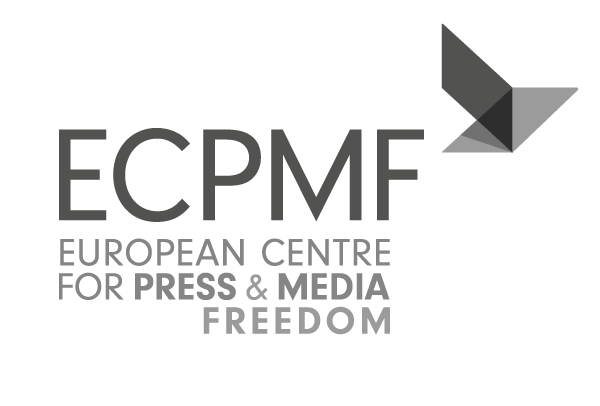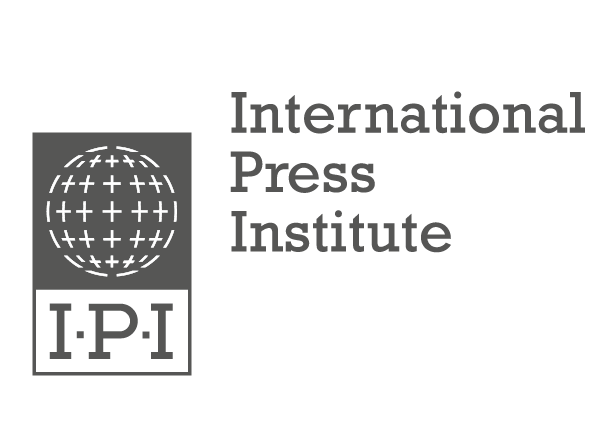
By Roberta Knoll, European Centre for Press and Media Freedom
In this piece, ‘women’ refers to all people who identify as women.
“Watch when you are seen in public”. This was a message sent to reporter Marianna Spring in relation to her coverage of disinformation and social media for the BBC. In the response to one piece, it was not the only threat she received. Nor is she alone in receiving these sorts of threats.
“A big TV cannon comes over to me and tells me that if I do not suck his cock, then he will ruin my career. I said no.” With this announcement, the TV presenter Sophie Linde brought the worldwide solidarity movement #metoo to Danish media, reaching thousands of women.
Too often, online and offline harassment and threats, including threats of sexual violence are seen as the price women and non-binary people are expected to endure for speaking out. Together with the growth of social media and other internet platforms, attacks are able to reach more people from a wider number of sources, both named and pseudonymous. This leads to an even more hostile atmosphere for women journalists and media workers (TrollBusters & WMF 2018). Online harassment too often forms part of women’s daily routine; it is not an exception to the rule, it is rule. Moreover, it is not only the online environment where women face threats, with the offline world punctuated by similar types of threats. Threats faced offline are a global issue and they emerge from a number of different sources.
Online harassment too often forms part of women’s daily routine; it is not an exception to the rule, it is rule.
According to an IFJ report in 2017, 17 % of gender-based violence is perpetrated by colleagues, 38% by managers or supervisors, and 43 % by outsiders (IFJ 2017).
You cannot talk about media freedom violations without talking about gender
For example, in North Macedonia, you cannot talk about media freedom violations without talking about gender based violence and harassment. As monitored by The Association of Journalists of Macedonia (ZNM), 14 violations of media freedom have taken place since the beginning of 2020. Half of these targeted women. This issue has been amplified by the COVID-19 pandemic in unexpected ways. The 2020 Assembly election campaign took place against the backdrop of increased restrictions and lockdowns to respond to the pandemic. This resulted in most campaign events taking place online. While journalists have been physically assaulted during previous campaigns, with the events moving online, the abuse that followed in 2020 took on an explicitly gendered dimension with the targeted being predominantly women.
The complex mixing of being a women journalist
The two examples mentioned earlier exemplify different kinds of threats but follow similar structures: using existing power inequalities and deploying physical violence or threats to intimidate women journalists by restricting their space and attacking their willingness to speak out. While women journalists and media workers are more visible in public and able to voice their opinion, outdated misogynistic ideas surrounding gender roles and expectations of media representation feed the wide range of media freedom violations in Europe, ranging from online harassment, abuse in the public areas, up to physical violence and even murder. Women journalists and media workers face a double threat, the daily impact of structural inequality and the dangers working as journalists at a time where media actors are increasingly dehumanised or attacked. This results in a complex mixing of structural discrimination that impacts women disproportionately and may encourage many to step back from their work.
Women journalists and media workers face a double threat, the daily impact of structural inequality and the dangers working as journalists at a time where media actors are increasingly dehumanised or attacked.
Gender-based harassment as threat to democracy
This hostility when coupled with insecure working conditions cause trauma, fear, anxiety and mental health issues for the affected. This atmosphere requires significant resilience to continue working especially on sensitive and complex topics, such as corruption, abuses of power and increasingly, mainstream politics. Expecting women journalists and media workers to endure these threats as part of their day-to-day to work is unreasonable and demonstrates significant barriers to continuing work not present with their colleagues. Instead it is much more likely that this double burden leads to silencing and self-censorship of women journalists. Living in such consistent fear results in a reduced space within which they can work and express their expertise and opinions. This is an issue for the entire media environment as this threatens the plurality of voices present in society, narrowing the public sphere and as a result weakening democracy.
It is not only the victims themselves at risk; these threats affect us all, from our ability to access information that shapes our knowledge relating to the world around us to having our experiences represented in the media that can inform public opinion or policy.
Insights from Mapping Media Freedom platform
The monitoring platform mappingmediafreedom.org has registered around 63 alerts where women journalists were targeted or directly affected. Of course, this will only ever be a partial picture, as many victims do not report threats they have received or have come to expect them as the price for working as a journalist or media worker. These dynamics have also made it hard to accurately gauge the impact of gender-based harassment amongst journalists in Europe. According to the IFJ 2017 report, 48% of women journalists experienced violence at work.
Gender-based violence? #ReportIt!
The cases monitored to date already show the variety of threats women journalists face. They are diverse in intensity, geographical dissemination, source and nature. However, capturing as many incidents on Mapping Media Freedom helps us track, analysis and record these incidents. It is also a powerful act of solidarity to those at risk, demonstrating that they are not suffering alone.
Although the platform cannot singlehandedly dismantle the structure that sustains these threats, it is an effective tool to plot trends and see the bigger picture of what the situation is and of what needs to be done. The Media Freedom Rapid Response can only support the cases we know about and reporting every incident helps us reach those at risk.
We want to encourage everybody to report every kind of threat and abuse of women journalists and media workers to https://www.mapmf.org/report-it or you can contact our Women’s reporting point.
Gender-based violence is not normal, nor should it be accepted. It is a threat to media freedom and democracy. #ReportIt!
Photo: Clem Onojeghuo//unsplash





